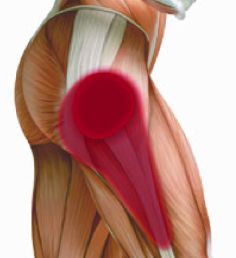Trochanteric Bursitis Causes, Symptoms, Diagnosis and Treatment

What is Trochanteric Bursitis?
Trochanteric bursitis is the most common bursitis of the hip. It is also a common cause of Greater Trochanteric Pain Syndrome.
Trochanteric bursitis is inflammation of the bursa (a small, cushioning sac located where tendons pass over areas of bone around the joints), which lies over the prominent bone on the side of your hip (femur).
Causes of Trochanteric Bursitis
Trochanteric bursitis can result from one or more of the following events:
Injury to the point of the hip. This can include falling onto the hip, bumping the hip into an object, or lying on one side of the body for an extended period.
Play or work activities that cause overuse or injury to the joint areas. Such activities might include running up stairs, climbing, or standing for long periods of time.
Incorrect posture. This condition can be caused by scoliosis, Arthritis of the lumbar (lower) spine, and other spine problems.
Stress on the soft tissues as a result of an abnormal or poorly positioned joint or bone (such as leg length differences or arthritis in a joint).
Other diseases or conditions. These may include Rheumatoid Arthritis, gout, Psoriasis, Thyroid Disease or an unusual drug reaction. In rare cases, bursitis can result from infection.
Previous surgery around the hip or prosthetic implants in the hip.
Hip bone spurs or calcium deposits in the tendons that attach to the trochanter.
Bursitis is more common in women and in middle-aged or elderly people. Beyond the situations mentioned above, in many cases, the cause of trochanteric bursitis is unknown.
Symptoms of Trochanteric Bursitis
Trochanteric bursitis typically causes the following symptoms:
- Pain on the outside of the hip and thigh or in the buttock.
- Pain when lying on the affected side.
- Pain when you press in on the outside of the hip.
- Pain that gets worse during activities such as getting up from a deep chair or getting out of a car.
- Pain with walking up stairs.
Diagnosis of Trochanteric Bursitis
Your physiotherapist will provide you with an assessment of your medical history and a physical examination of your hip, pelvis and back. A hallmark sign is if you feel tenderness over the bursa or greater trochanter (hip bone) when pressure is applied.
Diagnosis can also be confirmed by medical imaging techniques that include ultrasound scan & MRI.
Treatment of Trochanteric Bursitis
Greater trochanteric pain syndrome is usually self-limiting. That is, it usually goes away on its own in time. However, it commonly takes several weeks for the pain to ease. Symptoms can persist for months, and sometimes longer in a small proportion of cases. However, persistence does not mean that there is a serious underlying condition or that the hip joint is being damaged.
- Decreasing activity such as running or excessive walking for a while may help to speed recovery. In addition, the following may be useful:
- Early on applying an ice pack (wrapped in a towel) for 10-20 minutes several times a day may improve your symptoms.
- Taking paracetamol or non-steroidal anti-inflammatory drugs (NSAIDs) such as ibuprofen may help to reduce the pain.
- Losing weight. If you are overweight or obese then losing some weight is likely to improve your symptoms.
- Physiotherapy is often used and is often very effective.
- Injection of steroid and local anaesthetic. If the above measures do not help then an injection into the painful area may be beneficial.
- If the condition is severe or persistent then you may be referred to a specialist for advice regarding further treatment.
By : Natural Health News




